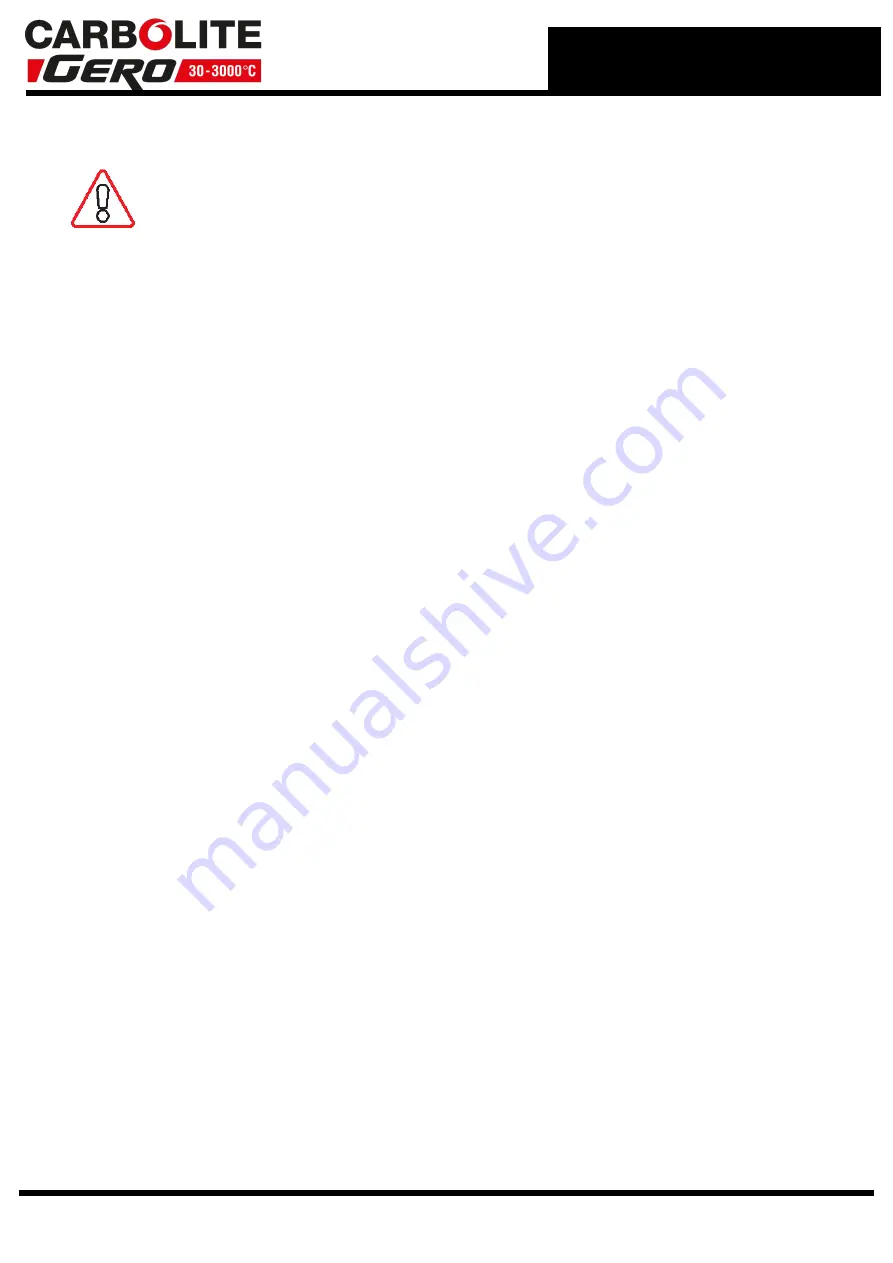
7.6
Element Replacement (Industrial Models)
See section 7.2 - wearing a face mask is required.
This operation requires two people and a cold product. Check that the
door counter weights hold the door up safely.
The chambers contain 12 off IAP tubes on which the 6 “hairpin” elements are mounted.
The elements operate from back-to-front-to-back. The connections are accessed by
removal of the upper back panel. The front end of the hairpin is restrained from sliding
along the tubes by a hook.
Disconnect the product from the electrical supply and remove the back panel.
It is advisable to make a written plan showing all the element and thermocouple
connections to avoid any problems when reconnecting to the power and other wires.
Loosen the clamping screws onto the terminal blocks holding the faulty element. Use
two spanners to avoid cracking the porcelain material. If necessary straighten the bent
ends of the wire. This must be done for both ends of the element, i.e. for two adjacent
terminal blocks.
Withdraw the tube on which the wire spiral is mounted, through the back. The second
person should assist by supporting the tube within the chamber and easing the element
off it.
From within the chamber, lift the wire element off the hook holding the front end and
remove the element through the furnace door.
Fit the new element. At the same time one person should feed the tubes through from
the back and the other should feed the wire spirals onto the tube.
To get the wire ends through correctly it may help to feed a flexible plastic or nylon
tube, with a bore just larger than the element wire, through the terminal block into the
chamber. Fit the element wire into this tube; as the tube is withdrawn, the element
feeds through the terminal block.
Finally locate the element correctly. At the front, connect the hook. At the back, ensure
that the last turn of the spiral is approximately one turn away from the insulation. Then
tighten the terminal block screws.
If necessary, cut off any excess wire.
Refit the back panel.
Check that the product is controlling properly to rule out the possibility that the previous
element failed because of a fault elsewhere in the control circuit.
7.7
Fuse Replacement
Fuses are marked on the wiring diagram with type codes, e.g. F1, F2. For more
information on fuses refer to section 10.0.
Depending on model and voltage, the different fuse types may or may not be fitted.
23
7.0 Repairs and Replacements







































